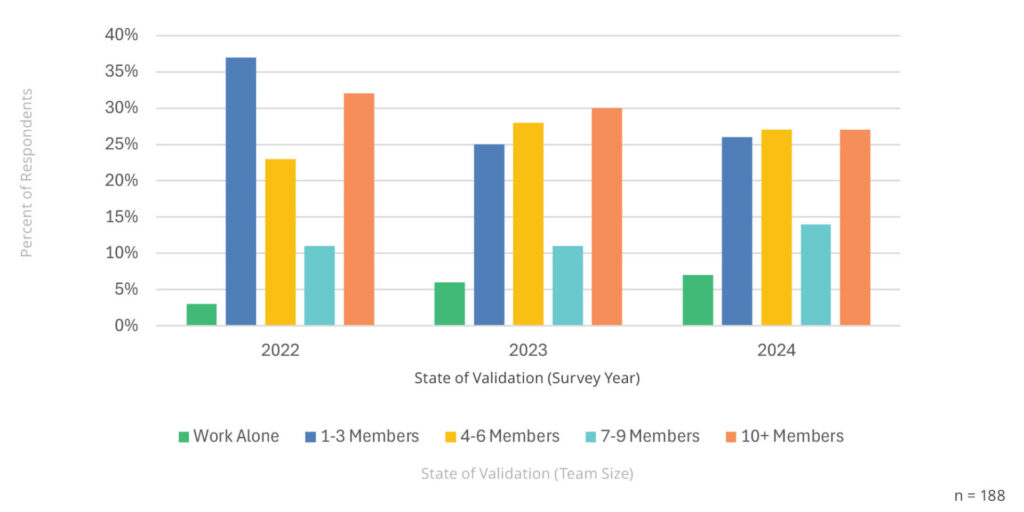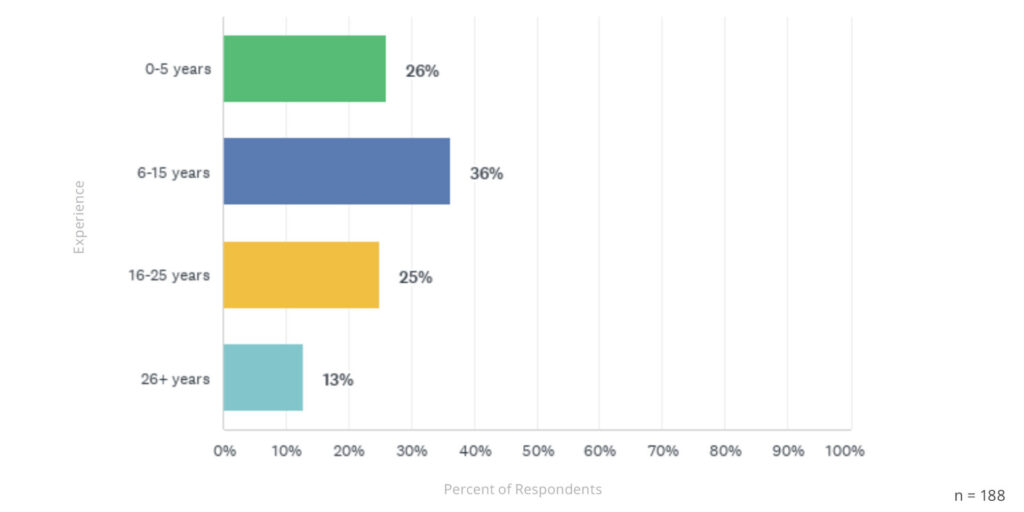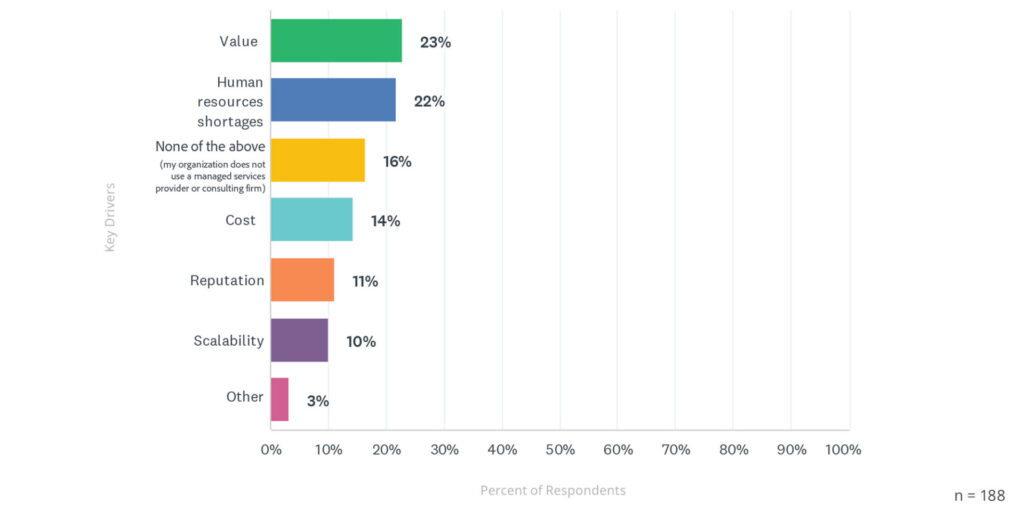Inaugurating in 2022, the State of Validation is an annual validation industry report, powered by Kneat Solutions, that aims to shed light on the practices, progression, and pitfalls of the validation industry globally. Independently authored by Jonathan Kay, a leading academic researcher, State of Validation comprises a broad quantitative and qualitative primary market research study, conducted directly with validation professionals worldwide.
The study captures a snapshot of the forces impacting the validation industry and tracks trends over time. From technological and regulatory change to commercial and market influences, organizational change and strategy, professional development and more, the State of Validation report offers essential insights into the current trends and dynamics within the validation sector for professionals seeking to enhance their practices and stay competitive.
The State of Validation is structured into five sections, each providing a comprehensive look at different aspects of the validation landscape:
- People and organizations: Examines roles, team sizes, outsourcing, experience, salaries, demographics, and job functions.
- Validation programs: Covers program structures, work processes, adoption rates of computer software assurance, budgets, workloads, and challenges.
- Goals and growth: Analyzes strategic goals, growth plans, performance metrics, and success factors.
- Industry change and digital transformation: Explores industry changes, digital transformation, remote assessments, technology impact, and ROI of digital validation systems.
- The future of validation: Assesses emerging technologies, methodologies like Industry/Pharma 4.0, industry evolution, and upcoming challenges.
In this article, we delve into key trends found in the “People and Organizations” section of the 2024 State of Validation report, highlighting team sizes, salaries, experience levels, and outsourcing trends.
Team composition
Three-year survey trends show slight increases among solo workers and larger teams, while mid-sized teams are declining (see chart below).
Trends: Team size

A sizeable majority of respondents reported operating in small teams, typically consisting of one to six employees. Specifically, in 2022 and 2024, 60% of respondents indicated they were part of teams of this size, with 59% reporting the same in 2023.
Smaller teams, comprising one to three people, have also been notably prevalent. In 2022 and 2024, one-third of respondents worked in such small teams, while in 2023, one-quarter reported the same. This consistency in team sizes suggests a trend towards lean validation teams, potentially driven by increased reliance on outsourcing and technological advancements.
Average salary ranges
Insights highlight the disparity between salaries based on organization size, with larger enterprises offering significantly higher salaries. This could reflect the resources available to larger companies and the need to attract top talent for complex validation roles. Dollar figures are calculated using USD.
- A majority (51 percent) of validation professionals in enterprise organizations (5,000+ employees) report having salaries of over $101,000.
- For medium-sized organizations (100-1,000 employees), 47 percent reported earning between $71,000 and $80,000.
- Small organizations (up to 100 employees) most commonly offered salaries in the $50,000 to $60,000 range, similar to large organizations (1,000-5,000 employees), where 31 percent reported this range.
For more detailed analysis of average salary ranges in the validation industry, download the full report now.
Experience in the validation sector
The validation sector boasts a significant depth of experience among its professionals. The largest group of respondents in the 2024 report (36%) reported having six to 15 years of experience in validation (see chart below).
Validation industry experience measured in year

The survey reveals a wide range of experience levels in validation. That allows companies to organize functions according to the level of responsibilities and degree of complexity. The depth of exposure to the industry varies, presenting an opportunity for companies to leverage their more experienced employees for more complex roles and management positions.
Seasoned employees are an internal asset to organizations who decide to establish informal or formal mentoring programs to train, develop, and retain less-experienced staff and lay out a path for their career success.
Trends in outsourcing
Levels of outsourcing
Outsourcing has become a critical component of validation activities. Most companies (78%) outsource some validation work, and often up to 10% of validation labor. Thirty-two percent of respondents outsource over a quarter of their validation activities (see graph below).
Outsourcing levels

This shift towards outsourcing highlights its growing importance in the validation sector. In a dynamic industry with a changing regulatory landscape and innovative technology development, these insights suggest outsourcing is a prevalent strategy to manage workload, access specialized expertise, and maintain efficiency.
Key drivers of outsourcing
Several factors drive the decision to outsource validation tasks. The most common driver, cited by 23% of respondents, is “Value” (see graph below).
Key drivers for outsourcing validation labor

Outsourcing provides cost savings, specialized expertise, flexibility, and access to advanced technology, making it a strategic advantage for many organizations.
Human resources shortages, cited by 22%, also play a significant role, as outsourcing helps address skill gaps and capacity issues. Cost considerations, mentioned by 14%, further underscore the financial benefits of outsourcing.
Advantages of outsourcing
The strategic advantages of outsourcing to experienced validation service providers are manifold. Organizations benefit from cost savings and access to specialized expertise that might not be available in-house. Outsourcing also offers flexibility, allowing companies to scale their validation activities as needed. Moreover, it mitigates risks associated with maintaining large internal teams and provides access to cutting-edge technology, which can enhance validation processes.
Final thoughts
The 2024 State of Validation report provides valuable insights into the current state of the validation sector. From the stability in team sizes and the increasing trend towards outsourcing to the depth of experience among professionals and the notable salary disparities, these findings offer a comprehensive overview of the industry’s dynamics.
Understanding these trends is essential for professionals seeking to enhance their practices and maintain a competitive edge. Staying informed about industry developments will help organizations and individuals navigate the evolving landscape of validation effectively.
For a more detailed analysis and additional insights, access the full report and explore how these trends can inform your validation strategies and practices!






